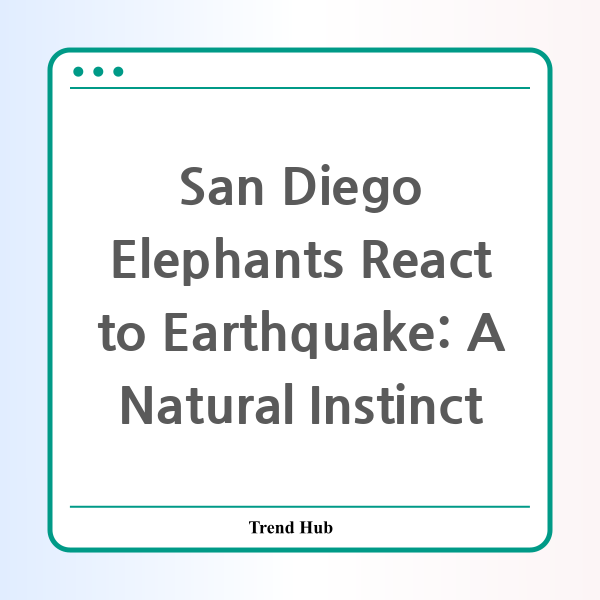* This website participates in the Amazon Affiliate Program and earns from qualifying purchases.

Did you ever wonder how animals react to natural disasters? Recently, a significant 5.2-magnitude earthquake shook San Diego, but it was the response of a herd of elephants at the San Diego Zoo Safari Park that truly captured the attention of viewers worldwide.
On a sunny Monday morning, as the earth trembled, a group of African elephants displayed extraordinary behavior that highlighted their intelligence and social bonds. Video footage showed the elephants, including the matriarchs Ndlula, Umngani, and Khosi, springing into action to protect their calves, Zuli and Mkhaya, from any potential threats.
As the ground shook, the older elephants quickly formed an "alert circle," a defensive maneuver that serves to protect the young from perceived dangers. This instinctive action not only underscores their protective nature but also demonstrates their remarkable ability to feel vibrations through their feet, allowing them to sense danger in ways that humans cannot.
According to Mindy Albright, a curator of mammals at the Safari Park, the observed behavior is entirely typical for elephants when faced with threats. When the initial tremor struck, the elephants huddled closely together, with the younger calves protected in the center. This remarkable display of maternal care and instinctive wisdom emphasizes the deep social structures within elephant herds.
Interestingly, while one of the calves tried to seek refuge closer to the adults, the other, a young male, stood at the periphery of the circle, showcasing his budding independence. The female elephant Khosi, who plays a nurturing role, tapped the young male with her trunk—an action that seemed to reassure him and encourage him to stay safely within the protective circle of adults.
Even as the dust settled post-earthquake, this circle formation persisted until they assessed that it was safe. This behavior serves as a poignant reminder of the protective tendencies that are vital in both the animal kingdom and human society.
While the earthquake rattled the region, affecting areas from San Diego to Los Angeles, it ultimately resulted in minimal damage and no reported injuries. However, the event served as a wakeup call for many residents about the importance of earthquake preparedness. In areas like Julian, where the tremor was felt most acutely, it sparked conversation about readiness plans that should be in place for such occurrences.
Experts have indicated that this quake was likely a result of the Elsinore Fault system, which has a history of seismic activity. The tremors experienced were significant enough to remind us all of the earth's raw power and unpredictability.
In the aftermath of the quake, the San Diego Zoo Safari Park elephants reestablished their calm demeanor. About an hour later, a small aftershock was recorded, but once again, the elephants instinctively huddled together before dispersing after assuring that all were safe.
In conclusion, the actions of the elephants at the San Diego Zoo Safari Park not only serve as a captivating glimpse into the natural instincts of wildlife but also highlight the importance of community—whether among elephants or humans—during times of crisis. As we reflect upon such events, it reminds us to be prepared and foster a protective spirit within our own families and communities.
* This website participates in the Amazon Affiliate Program and earns from qualifying purchases.